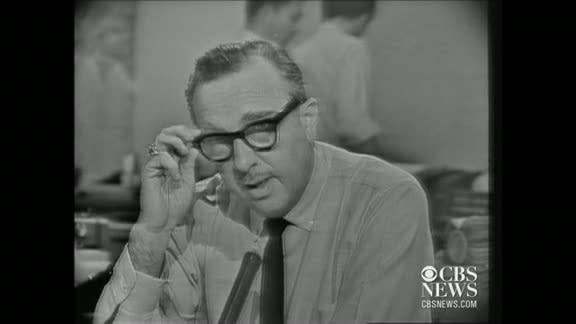JFK, in 140 characters
How the media covered Kennedy's assassination in 1963, and how it would be covered in the age of Twitter

The biggest news story of the week seems to be the anniversary of a news story: An absolute blizzard of content and commentary and interactive timelines and documentary recaps have reminded us that John F. Kennedy was assassinated 50 years ago today.
In general, anniversary “coverage” is a dubious category — a variation on the pseudo-event idea that Daniel Boorstin complained about even while Kennedy was alive. But I admit, I’ve gotten caught up in revisiting-JFK mania. This is not a nostalgia thing (JFK died before I was born) or even the result of history-buff interest in Kennedy’s brief, albeit dramatic, presidency.
It’s the way the event was covered in real time that I’ve been fascinated to revisit — from the vantage point of today’s infinitely more real-time, technology-driven news cycle.
In particular, the PBS documentary "JFK: One PM Central Standard Time" lasers in on this event as a pivotal moment in media-tech culture, by way of a detailed, second-by-second recounting of how the news broke.
What’s obvious at first are the differences from our own era. There was just one phone shared by the entire presidential press pool to communicate with every home news office. It took 20 minutes to turn on a television camera. Walter Cronkite, according to gauzy narration by George Clooney, was a “hero” of the era — the king of news and everybody’s uncle, all in one; it would be tough to make that same case for, say, Charlie Gibson, or Wolf Blitzer.
But what struck me as I watched were the similarities to today’s hypercompetitive mediascape. Robert MacNeil recalls the instant that “there was a bang” and the split seconds taken to realize “those are shots!” There was screaming; nobody really knew what was going on. But Merriman "Smitty" Smith, a United Press International correspondent who had planted himself next to that lone press phone in the motorcade, won a Pulitzer for his coverage: He immediately grabbed that phone and dictated the bulletin: “THREE SHOTS WERE FIRED AT PRESIDENT KENNEDY'S MOTORCADE IN DOWNTOWN DALLAS.”
So tweetable, right?
In fact, there’s something weirdly familiar about the rapid fragments blurted out by UPI and its rival the Associated Press in the minutes that followed. Of course these instant messages weren’t distributed directly to the masses, but via teletype to newsrooms, and "One PM Central Standard Time" largely revolves around the idea of news anchor Walter Cronkite’s caution — culminating in his fleeting hint of emotion when he informs viewers that the president is, officially, dead.
But this focus is a bit misleading: It’s clear from the footage that Cronkite also passed along “unconfirmed” reports and “rumors” to precisely the same effect well before the government confirmed them. He identified them as such — but he passed them along just the same, and pretty much as quickly as he could. Just as media outlets, and one-man Twitter shows, do today.
Perhaps if 21st century media tools existed in 1963, UPI would have been scooped by a tweeting Parkland Hospital worker. Then again, that wouldn’t have affected the importance of the story itself — just who “broke” it. (Semirelated: If you'd like to see how the moments before, during and after Kennedy's assassination may have played out on Twitter, this account is tweeting the day's events in real time.)
What’s really different today isn’t the style of coverage, it’s the scale: The citizen-professional media complex covers everything like a momentous event that justifies a mad scramble to be first.
When the event is sensational and shocking, like the Boston Marathon bombing, everybody becomes a Merriman Smith wannabe, and with perhaps good reason. But even when the event does not warrant breathless coverage, news pros behave as though it does, touting “exclusives” about unsurprising political endorsements or Anthony Weiner’s sexting habits, and “new details” on George Zimmerman’s latest brush with the law or the never-ending antics of Toronto Mayor Rob Ford. This is why Twitter’s Event Parrot experiment — promising to deliver “breaking news” to users — is such a challenge: How can one be a virtual Cronkite in an information environment where “breaking” is a default condition of, not an unusual exception to, “the news”?
"One PM Central Standard Time" mentions in passing that information moved across the newswires in a ranked manner: A “bulletin” was accompanied by five bells (signifying a big deal) and a “flash” by 10 (signifying a truly momentous development); lesser developments were less urgently flagged. That clear hierarchy is what feels increasingly rare 50 years after the story we’re so fond of remembering as a turning point in real-time news: Everything is a flash, even the stuff we’ll likely forget about tomorrow.


